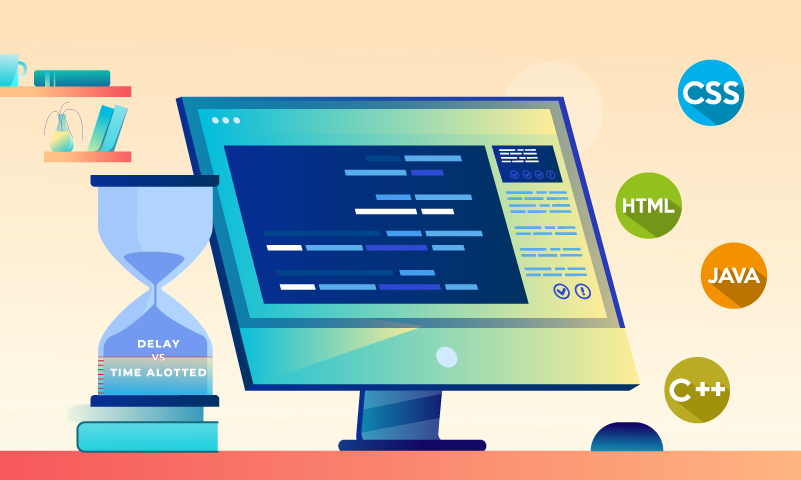5 Reasons why digital products fail?
October 14, 2020
Why do Products fail?
According to Harvard Business School there are over 30,000 new products introduced every year (physical and digital), and 95% fail. That’s a disturbing thought for every organization, especially the Startups who run thin on capital. This statistic is an enormous deterrent for all those who aspire to create their dream product one day. That brings us to the main question, why do products fail? And by product failure, we don’t just mean a dull financial return, poor user adaptability and feedback are equally important parameters.

Reason #1: Fixing a Problem that doesn’t exist
The origin of every solution comes from a problem. A Product in today’s competitive market is considered irrelevant if it doesn’t solve a problem that users are troubled with. Such product eventually disappears from the market place and from the user’s mind. To avoid this frequent issue and to thus increase your chances of building a triumphant product, we advocate a strong shot of self-doubt. The original spark of creativity that has, over time, turned into a mental image of a fully-fledged digital product is probably based on a few assumptions and hypotheses – and it’s only right to challenge them. To find reasons for not developing the product which you feel is going to sweep the users off their feel could be helpful in bursting a few bubbles.

Reason #2: Failure to Understand Consumer Needs and Wants
We mustn’t forget that customers are the ones with the strength to determine the success or failure of the products, after all, it’s them whom we are developing the products for.
“Start with the customer experience and work backwards to the technology” – Steve Jobs
To start with the technology and reserving the strategy of selling the product for later will add unforeseen complications in the entire product development process.
Taking into account all the kinds of customer needs has become the key to building products.

Reason #3: Lacklustre Quality
Product quality is ‘how well the product does what it’s supposed to do’, and how expertly it holds up over time. Poor build quality does an irreparable damage by turning a customer into a foe, who would not just stop using your product, but will influence others as well. This chain reaction can terminate countless potential sales, paving an irreversible way towards product failure.
The biggest dimension of quality is how a digital product looks, feels, works and serves. Look & feel is all dependent on the brains behind the UX & UI Design of the product whereas the coders determine the way product functions and serve. Let’s take a closer look at these 2 departments individually.
#1. UX UI Design
There are several reasons which can be attributed to the failure of an app. Poor User Experience undoubtedly remains the biggest culprit. Users don’t really remember everything that they come across while using a product, but what really gets stamped on their minds is the experience of using the product. They revisit the products that evoke some emotions while the interaction takes place. A good or bad UX can predict the future of your product.
“The best products are known for two things primarily: features and details. Features are what allure people to your product. Details are what keep them glued.” UX brings a logical flow to the product that focuses on getting tasks done in the easiest and smartest way possible. UI adds life to the flow by combining elements, colours, thought process and customer’s behaviour.
#2. Sleek Coding & Smart Technology
There is good programming and there is bad programming. Both may be correct as far as running the app is concerned. But bad coding eventually shows up in terms of how the product works. Badly written code could lead to financial losses or waste of time needed for further maintenance, enhancements, or adjustments to the software.
Messy code can be the biggest nightmare for the product owners. They are hard to read and to decipher. Fixing the bugs and adding new features to the code can be costlier than developing a brand new product. It’s utmost important to follow the best coding practices while developing the product.

Reason #4: Prolonged Development or Delayed Market Entry
Speed to market is a crucial key for the success of your product. If your new product development process takes 5 years but your competitors take 2 years – it is likely that no matter how good your designs are; you will miss monetising a great market opportunity.
The designers are the demigods who lead from the front in accelerating the design process without compromising the user experience. However, programming is a different ball game where the gods of coding modulate the pace of the project. Both the teams must collaborate to adopt agile processes to expedite the project delivery.

Reason #5: Misalignment with business processes
When enterprises put technology over strategy, product disasters ought to happen. Aligning product and business goals and integrating them seamlessly with business operations and finances is critical to project success. And this is a prerequisite for the product development process. Before the first line of code is written or the first sketch of UX is drawn, the team must develop a strategy on addressing every challenge that may show up in the future.
Conclusion
Product development as they say has become easier and convenient. Well, let’s agree to disagree. As your resources in hand (designers, coders, testers, tools) evolve, your competition and customers evolve too. To ideate a product, get it designed, developed and launched isn’t just sufficient. You must be ready to answer the toughest questions about your idea. A micro and macro view about the product not just boost your spirit, but also instil confidence in your investors.
Through this blog, we wanted to create a handbook for you before you take your 1st step. Follow these 5 pointers, and you are already a few steps nearer to seeing your dream converting into reality.
Keep reading about
LEAVE A COMMENT
We really appreciate your interest in our ideas. Feel free to share anything that comes to your mind.
Our 16 years of achievements includes:
-
10M+
lines of codes
-
2400+
projects completed
-
900+
satisfied clients
-
16+
countries served




